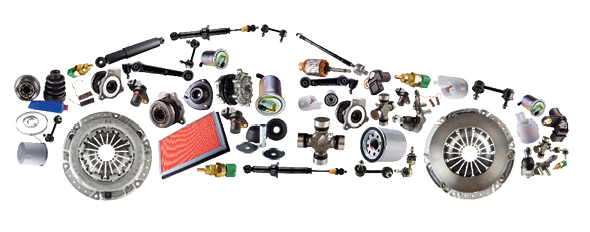
1)The trend of auto parts outsourcing is obvious
Automobiles are generally composed of engine systems, transmission systems, steering systems, etc. Each system is composed of multiple parts. There are many types of parts involved in the assembly of a complete vehicle, and the specifications and types of auto parts of different brands and models are also different. Different from each other, it is difficult to form a large-scale standardized production. As a dominant player in the industry, in order to improve their production efficiency and profitability, and at the same time reduce their financial pressure, auto OEMs have gradually stripped off various parts and components and handed them over to upstream parts manufacturers for supporting production.
2)The division of labor in the auto parts industry is clear, showing the characteristics of specialization and scale
The auto parts industry has the characteristics of multi-level division of labor. The auto parts supply chain is mainly divided into first-, second-, and third-tier suppliers according to the pyramid structure of “parts, components, and system assemblies”. Tier-1 suppliers have the ability to participate in joint R&D of OEMs and have strong comprehensive competitiveness. Tier-2 and Tier-3 suppliers generally focus on materials, production processes and cost reduction. Tier-2 and Tier-3 suppliers are highly competitive. It is necessary to get rid of homogeneous competition by increasing R&D to increase the added value of products and optimizing products.
As the role of OEMs gradually changes from a large-scale and comprehensive integrated production and assembly model to focusing on the R&D and design of complete vehicle projects, the role of auto parts manufacturers has gradually extended from a pure manufacturer to a joint development with OEMs. Factory’s requirements for development and production. Under the background of specialized division of labor, a specialized and large-scale auto parts manufacturing enterprise will be gradually formed.
3)Auto parts tend to be lightweight development
A. Energy saving and emission reduction make the lightweight of the body an inevitable trend in the development of traditional automobiles
In response to the call for energy conservation and emission reduction, various countries have issued regulations on fuel consumption standards for passenger vehicles. According to the regulations of the Ministry of Industry and Information Technology of the People’s Republic of our country, the average fuel consumption standard of passenger cars in China will be reduced from 6.9L/100km in 2015 to 5L/100km in 2020, a drop of up to 27.5%; the EU has replaced voluntary CO2 through mandatory legal means Emission reduction agreement to implement vehicle fuel consumption and CO2 limit requirements and labelling systems within the EU; the United States has issued light-duty vehicle fuel economy and greenhouse gas emissions regulations, requiring the average fuel economy of US light-duty vehicles to reach 56.2mpg in 2025 .
According to the relevant data of the International Aluminum Association, the weight of fuel vehicles is roughly positively correlated with fuel consumption. For every 100kg reduction in vehicle mass, about 0.6L of fuel can be saved per 100 kilometers, and 800-900g of CO2 can be reduced. Traditional vehicles are lighter in body weight. Quantification is one of the main energy conservation and emission reduction methods at present, and it has become an inevitable trend in the development of the automobile industry.
B.The cruising range of new energy vehicles promotes the further application of lightweight technology
With the rapid increase in the production and sales of electric vehicles, the cruising range is still an important factor restricting the development of electric vehicles. According to relevant data from the International Aluminum Association, the weight of electric vehicles is positively correlated with power consumption. In addition to the energy and density factors of the power battery, the weight of the entire vehicle is a key factor affecting the cruising range of an electric vehicle. If the weight of a pure electric vehicle is reduced by 10kg, the cruising range can be increased by 2.5km. Therefore, the development of electric vehicles in the new situation has an urgent need for lightweight.
C.Aluminum alloy has outstanding comprehensive cost performance and is the preferred material for lightweight automobiles.
There are three main ways to achieve lightweighting: the use of lightweight materials, lightweight design and lightweight manufacturing. From the perspective of materials, lightweight materials mainly include aluminum alloys, magnesium alloys, carbon fibers and high-strength steels. In terms of weight reduction effect, high-strength steel-aluminum alloy-magnesium alloy-carbon fiber shows a trend of increasing weight reduction effect; in terms of cost, high-strength steel-aluminum alloy-magnesium alloy-carbon fiber shows a trend of increasing cost. Among the lightweight materials for automobiles, the comprehensive cost performance of aluminum alloy materials is higher than that of steel, magnesium, plastics and composite materials, and it has comparative advantages in terms of application technology, operational safety and recycling. Statistics show that in the lightweight material market in 2020, aluminum alloy accounts for as high as 64%, and it is currently the most important lightweight material.
Post time: Apr-07-2022
